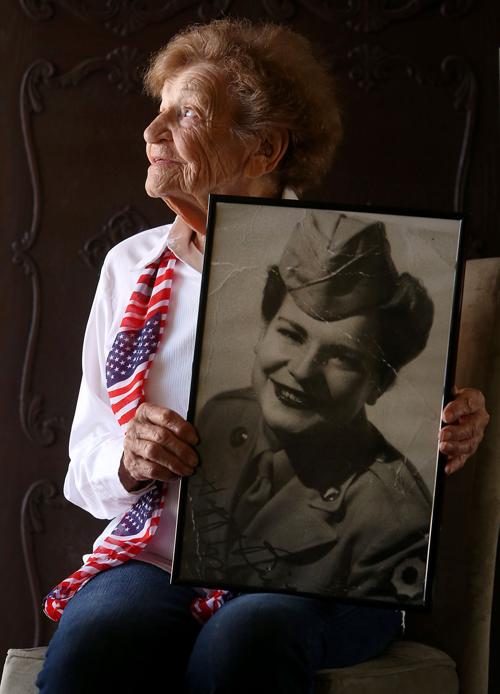At 92 years old, Mary Hill‘s memory sometimes fails her. But she can recall like yesterday a newspaper headline from World War II.
“The headline was: ‘U.S.S. Jarvis Disappears,’ ” Hill said.
One of her eight brothers had served on the ship, which was docked in Pearl Harbor when Japanese bombers attacked on Dec. 7, 1941. But the Jarvis was lost in the Battle of Savo Island in August 1942 as part of the allies’ first Guadalcanal campaign in the Solomon Islands.
Hill’s brother died along with the entire crew of more than 200 men.
Hill would join the Women’s Army Corps in 1943. But getting in to the service wasn’t easy.
“I had really bad eyes when I was 3 years old and the doctor said I would be blind by the time I was 10,” she remembers.
Though Hill didn’t go blind, t trouble with her eyes did cause the Navy and Marines to reject her for service.
The Army too, nearly rejected her.
“She said, ‘If you keep squinting I’m going to disqualify you,’” Hill remembers the nurse saying as she conducted Hill’s physical. And Hill was accepted in the WAC.
Hill’s daughter, Jakki Hill, jokes that patriotism wasn’t the only motivation for her mother to leave her home in Minneapolis for the service.
“The No. 1 reason she wanted to go into the service was because that’s where the guys were,” Jakki said.
Eventually, Hill ended up at Dibble General Hospital in Palo Alto, California. She had trained as a medical technician, but once hospital officials learned she could type they placed her in an office job.
Hill later was stationed in El Paso, where she met her husband Henry Hill.
“They met and married in three weeks,” Jakki Hill said.
The couple set out for Japan shortly after the Japanese surrender, where Mary Hill said they were among the first American occupying forces.
While stationed at Nagoya Air Base, Henry Hill helped design and build what became the American Village and she worked at the post exchange.
“It was truly Japanese,” she recalls, noting the limited connection local residents had had with the outside world at that time. Hill said the introduction of American products into the local community caused a minor sensation.
Among the biggest hits, she recalls, were the American-style flip-flops sold at the base store.
But it wasn’t just the products the Americans sold that fascinated local residents. Japanese children, in particular, were fascinated by appearance of the Americans living among them, Hill said.
“I was young and had long blonde hair,” she said, remembering how strange she must have appeared to the Japanese children.
Despite the American presence as an occupying power, Hill said she made many good friends in Japan. One was the housekeeper she and her husband hired, with whom she later maintained a relationship through cards and letters for years after the Hills left the country.
“Her name was Michiko Yamaguchi, but my husband called her Helen,” Hill said.
After three years, the Hills left Japan. Henry Hill remained in the service, serving until 1969, when the family retired to Colorado Springs. Mary Hill now lives in Green Valley.





